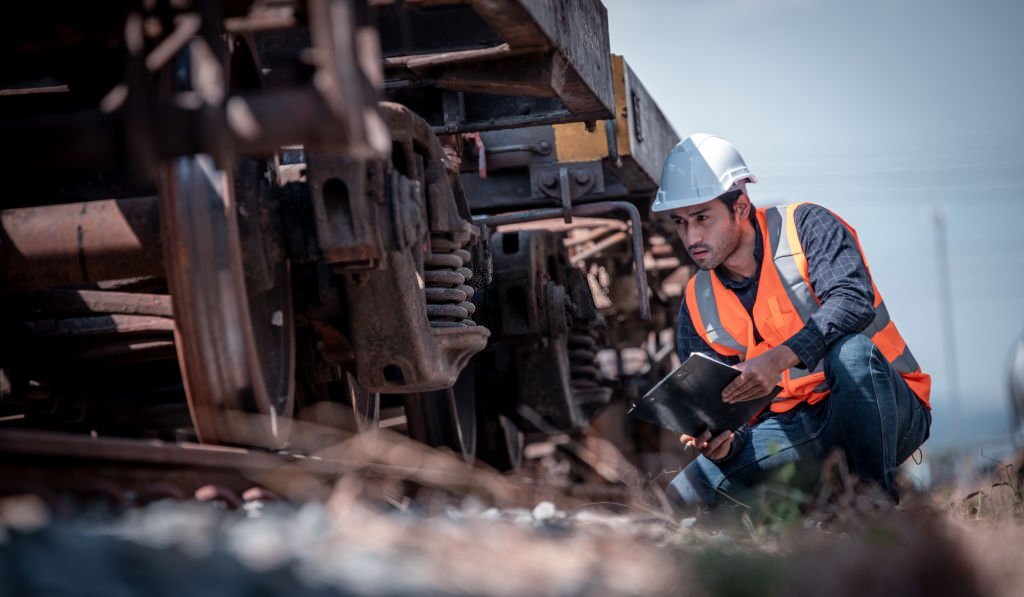
Introduction:
Railway maintenance is a complex and vital aspect of ensuring safe and efficient rail transportation. This article provides an extensive exploration of various examples of railway maintenance equipment, shedding light on the diverse functions, advanced features, and specific roles each type of equipment plays in maintaining the integrity of rail networks.
Track Inspection and Maintenance Equipment:
- Track Geometry Cars:
- Function: Measure track alignment, curvature, and other parameters to ensure proper track geometry.
- Benefits: Prevent derailments, ensure safe train operations, and reduce track wear.
- Ultrasonic Flaw Detection Vehicles:
- Function: Use ultrasonic technology to detect hidden rail defects that could lead to accidents.
- Benefits: Early defect detection, enhanced safety, and reduced maintenance costs.
Ballast Maintenance Equipment:
- Ballast Regulators:
- Function: Distribute and shape ballast for proper track alignment, stability, and drainage.
- Benefits: Maintain track geometry, ensure stability, and improve load distribution.
- Ballast Cleaners:
- Function: Remove debris, worn-out ballast, and contaminants, replacing them with fresh ballast.
- Benefits: Enhance track stability, drainage, and longevity.
Rail Welding and Grinding Equipment:
- Mobile Flash Butt Welding Machines:
- Function: Create continuous welds between rail sections, ensuring track integrity.
- Benefits: Strong welds, reduced maintenance, and improved track safety.
- Rail Grinders:
- Function: Restore the rail profile, reducing friction for smoother train operations.
- Benefits: Optimize track geometry, reduce noise, and improve ride quality.
Turnout and Switch Maintenance Equipment:
- Turnout Tamping Machines:
- Function: Maintain proper geometry and alignment of switches and turnouts.
- Benefits: Ensure safe rail operations, prevent derailments, and maintain track integrity.
- Switch Inspection Vehicles:
- Function: Inspect switch components for defects using sensors and cameras.
- Benefits: Early defect detection, efficient maintenance, and improved safety.
Bridge and Overhead Line Maintenance Equipment:
- Bridge Inspection Units:
- Function: Inspect the condition of railway bridges and viaducts to ensure structural integrity.
- Benefits: Enhanced safety, reduced downtime, and prolonged bridge lifespan.
- Overhead Line Maintenance Equipment:trong>
- Function: Maintain overhead power lines for uninterrupted power supply to trains.
- Benefits: Reliable power supply, smooth operations, and minimized disruptions.
Emergency Response and Derailment Recovery Equipment:
- Derailment Recovery Equipment:
- Function: Aid in re-railing derailed trains and clearing wreckage to restore operations.
- Benefits: Swift response, minimized disruptions, and enhanced safety.
Data-Driven Maintenance and Technological Advancements:
- Digital Twin Technology:
- Function: Create virtual replicas of rail infrastructure for real-time monitoring and predictive maintenance.
- Benefits: Enhanced monitoring, early defect detection, and optimized maintenance.
- Predictive Analytics and AI Integration:
- Function: Use AI-powered analytics to predict maintenance needs and minimize downtime.
- Benefits: Optimize maintenance schedules, reduce costs, and enhance reliability.
Conclusion:
The diverse array of railway maintenance equipment examples showcased in this article underscores the intricate web of tools and machinery required to ensure the safety, efficiency, and reliability of rail networks. Each type of equipment plays a specific role in maintaining track geometry, preventing defects, and extending the lifespan of rail infrastructure. As technological advancements continue to shape the rail industry, the capabilities of these maintenance equipment examples will evolve, ultimately contributing to the seamless movement of trains and passengers across the global rail landscape.

